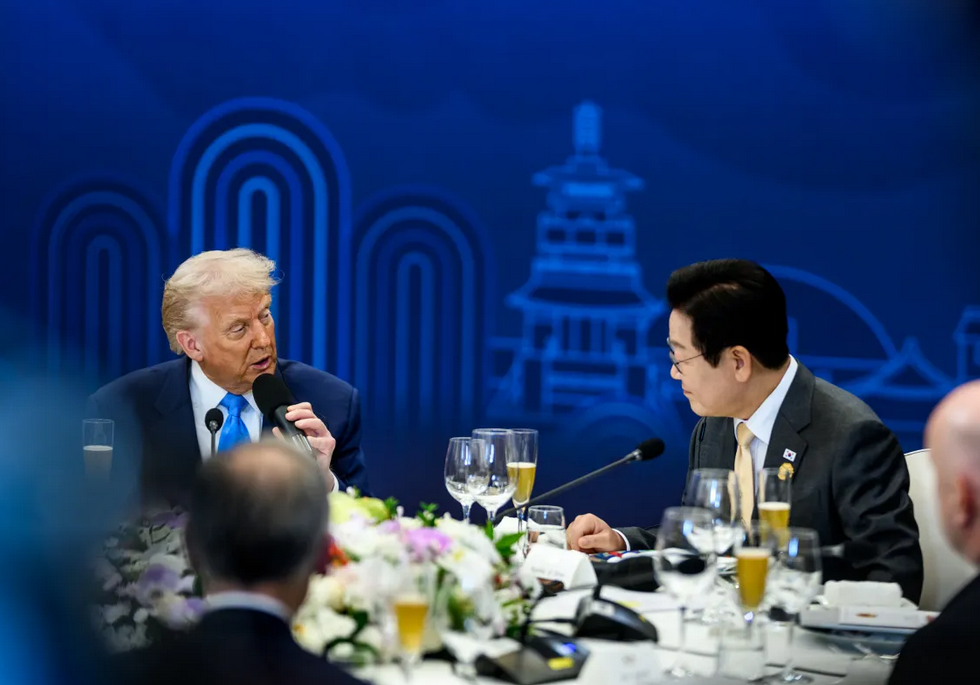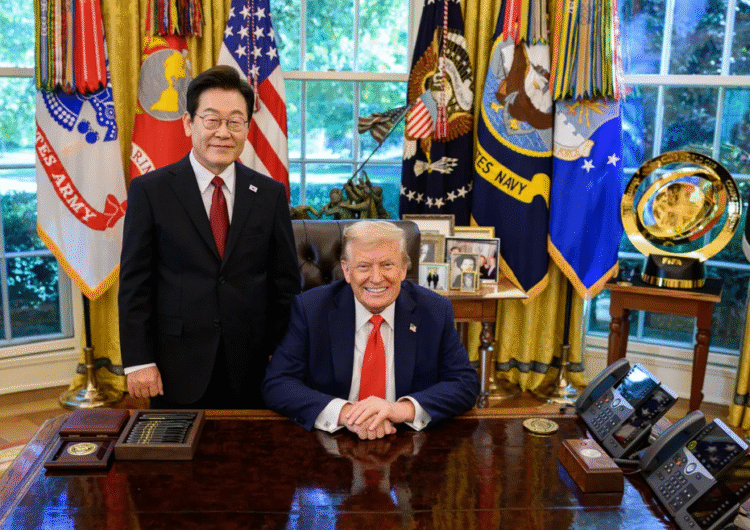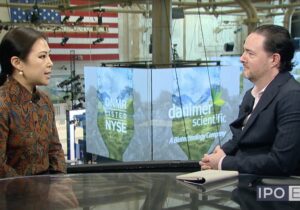By Heather Nauert
As world leaders prepare for the Asia-Pacific Economic Cooperation (APEC) summit in South Korea on Friday, the United States faces a defining question: Who will help us power the next American century? The answer, forged in war and strengthened by decades of economic partnership, is clear: South Korea.

South Korean President Lee Jae Myung hosts President Donald Trump for dinner ahead of the APEC summit in South Korea.
Credit: White House
The U.S.–Korea alliance began as a military partnership, sealed on the battlefields of the Korean War. Over 70 years, it has grown into one of the world’s most robust economic relationships, built on trust, shared values, and mutual prosperity. Today, as the U.S. seeks to rebuild its energy infrastructure and secure its economic future, there are few better partners than Korea, especially in the critical field of commercial nuclear energy.
The stakes could not be higher. America’s electricity demand is surging, driven by the rapid expansion of AI-powered data centers and the electrification of everything from cars to factories. The International Energy Agency projects that the U.S. will need an additional 100 gigawatts of power generation by 2030. It is an unprecedented challenge. President Trump has responded with bold executive orders: 10 new large-scale nuclear plants by 2030, quadrupling nuclear capacity by 2050, and streamlining regulatory approvals for advanced reactors. Congress, in a rare show of bipartisanship, has preserved and expanded incentives for nuclear energy, recognizing its role in national security and economic growth.
But ambition alone is not enough. The U.S. nuclear industry faces daunting obstacles: construction costs that are more than double those of natural gas or renewables, chronic delays, and a looming shortage of skilled workers. The recent Vogtle project in Georgia, for example, ran more than a decade late and 50 percent over budget, costing $16.7 million per megawatt. In contrast, South Korea’s nuclear plants are built for $3.4–$4.7 million per megawatt, with average construction times of just over eight years, which is among the best in the world. In the 1970s and 1980s, civilian nuclear power became unpopular in the U.S., causing American firms to shift their focus to other construction projects, while Korean firms continued to innovate. The U.S. should leverage its ally’s expertise, design standardization, and manufacturing know-how – techniques that could cut nuclear construction costs by up to 40 percent in the U.S.
This is not just about numbers. It’s about trust. Nuclear energy is the most sensitive of industries, demanding the highest standards of safety, security, and technical excellence. Companies such as Doosan Enerbility, Hyundai Heavy Industries, and Korea Hydro & Nuclear Power have supplied key components for American reactors for decades. Other Korean firms, including Samsung, Hyundai Motor, Kia, SK, and CJ, have invested billions in the U.S., employing tens of thousands of Americans and contributing to local economies from Alabama to Georgia to Texas. These investments accelerate and modernize American manufacturing, shipbuilding, and now, potentially, energy.
The Trump administration has already welcomed Korean expertise to help rebuild critical industries like shipbuilding. Energy cooperation, especially in nuclear and gas turbines, is the next logical step. It could create tens of thousands of high-paying, family-supporting jobs — many of which are accessible to Americans with a high school diploma. This is not just an economic opportunity; it is a pathway to restoring the American middle class, a goal that President Trump has championed.
The benefits go beyond economics. A robust U.S.–Korea nuclear partnership would help reinforce supply chains, ensure reliable delivery of critical components, and help the U.S. meet surging power demand. It would also position both countries as global leaders in exporting advanced nuclear technology, capturing a greater share of the international energy market, and providing a counterweight to China’s growing influence in the region.
This is a bipartisan issue. Members of Congress from both parties have called for deeper U.S.–Korea nuclear cooperation, recognizing that their constituents stand to gain from new jobs, increased tax revenue, and enhanced national security. President Trump met with South Korean President Lee Jae Myung on the sidelines of the APEC Summit on Wednesday, building on the relationship they forged in Lee’s visit to the White House in August.
Some may ask: Why Korea? It is not just an ally; Korea is a trusted friend, a proven partner and a powerhouse of innovation. As we face the twin challenges of energy security and economic renewal, we should look to those who have stood with us through war and peace.
The future of American energy—and American leadership—depends on the choices we make today. By deepening our partnership in commercial nuclear energy, we can build a safer, more prosperous and more secure future for both nations.
Heather Nauert was the Spokesperson for the U.S. Department of State from 2017-19 and Acting Undersecretary of State for Public Diplomacy and Public Affairs from 2018-19.
READ MORE
Final Agenda: 5th Palm Beach CorpGov Forum Nov 5-6 with NYSE and Goldman Sachs
Register for our weekly newsletter HERE
Contact:
Click HERE to follow us on LinkedIn







